June 17, 2025 | 18:08 GMT +7
June 17, 2025 | 18:08 GMT +7
Hotline: 0913.378.918
June 17, 2025 | 18:08 GMT +7
Hotline: 0913.378.918
Nowadays, organic veggies and fruits are more expensive than conventional ones. Nonetheless, the trend and demand for organic foods continue to grow.
Organic vegetables are ones that are grown naturally, with no extraneous influences from humans affecting their growing process.
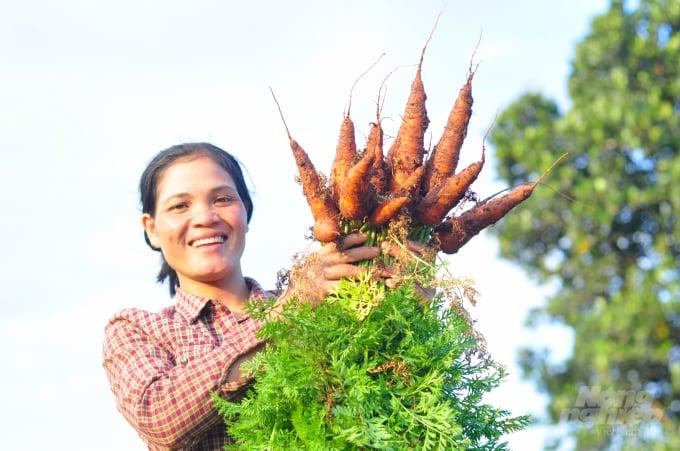
Organic vegetables and fruits are quite small, light in color, not too eye-catching, but are increasingly fond by consumers. Photo: VAN.
Organic vegetable planting is always focused on promoting ecological balance, biodiversification, and preservation while adhering to certain criteria such as no chemical fertilizer, no herbicides, no toxic pesticides, no GMOs, and no growth stimulants.
This indicates that organic vegetables and fruits are grown in their natural habitat. It takes a sophisticated and time-consuming culture and care procedure to respond to the criteria. This is precisely why they are considered a "precious gift" of nature.
Indeed, organic veggies and fruits are not as nice as conventional vegetables and fruits since they typically have a smaller look and a light color, making them unattractive.
It is, however, superior in terms of nutritional value and fresh flavor. Organic vegetables and fruits are significantly more nutritionally dense than conventional ones, being high in vitamin C, iron, magnesium, phosphorus, and some antioxidants with anti-cancer properties.
What makes organic vegetables so popular and vital nowadays is their degree of cleanliness and safety for health.
According to Eat This, Not That, a recently reviewed study conducted by the United States Environmental Working Group (EWG) analyzed 80,000 foods and discovered that organically processed foods contain fewer harmful ingredients associated with negative health effects than non-organic processed foods.
Organic soil is best suited for organic plants. Organic vegetables and fruits, according to the agricultural association's guidelines, are determined by a variety of characteristics, including water supply, seed source, lack of fertilizers or pesticides, soil source, and nutrient content. However, in order to cultivate organic vegetables and fruits, organic soil is a must.

To grow organic vegetables and fruits, it is a must to build a basic foundation of organic soil first. Photo: VAN.
Organic soil is a microorganism-rich environment that is conducive to plant growth, especially organic vegetables and fruits that are difficult to cultivate.
There are several varieties of vegetables that may be produced hydroponically using a drip irrigation system and are referred to as organic veggies. However, organic hydroponics is impracticable and entirely inadequate with the notion of soil-based farming.
How has a small amount of coconut fiber and the incorporation of food sources into irrigation water resulted in organic vegetables? How will you, as a customer, see this issue?
There is a highly diverse growth system of soil microorganisms in organic mother soil. Soil animals and microorganisms cohabit with plants, establishing symbiotic partnerships. Each has a unique influence on the soil, promoting variety while maintaining balance and preserving the soil's nutritional content.
Organic soil is critical to the production of organic crops and fruits. As a result, organic veggies and fruits have a high nutritional value that consumers desire.
Each unique land has a unique combination of soil variables, water sources, and climate, which affects the trace components in the soil, resulting in a unique feature for the product. Typically, rare items such as cordyceps, which grows naturally only in Tibet, or Goryeo or Ngoc Linh ginseng.
You can import Goryeo ginseng farmed in the same climate conditions as Ngoc Linh, but you will most likely not attain the same results. Because the composition of Goryeo ginseng has shifted owing to the change in soil composition. Even a minor, trace-changing element can alter the product's uniqueness.
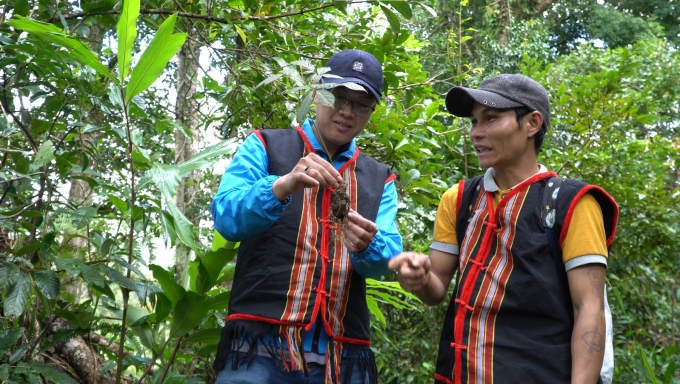
Ngoc Linh ginseng is special in that it is grown in the most suitable natural and organic forest land. Photo: VAN.
Natural soil conditions foster marvelous organic symbiosis
The roots determine whether a plant grows successfully or not. However, plant roots have a limited capacity for absorption and frequently fail to reach areas where nutrients are stored.
Vegetables may grow totally naturally with all the nutrients required by plants when grown in organic soil. Because organic soil contains specific bacteria and molds that interact exclusively with plant roots to form amazing symbiotic partnerships.
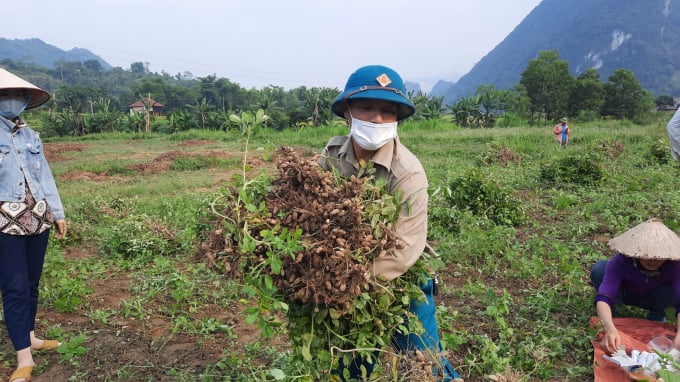
Peanuts and legumes have a great effect on soil improvement. Photo: Dao Thanh.
Rhizobacteria
The very first coexisting relationship that comes to mind is that of rhizobacteria. It was generated by legume roots, which thrive in this environment. And vice versa, they convert gaseous nitrogen to plant-available nutrients. Due to the phosphate, insoluble nutrients are liberated and metabolized, allowing plants to easily absorb the minerals.
Mycorrhiza
Along with rhizobacteria, another symbiotic association exists under the soil surface: mycorrhiza. This is a naturally occurring mycorrhizal fungus that develops in the soil. Although it is currently restricted to a small number of agricultural fields. However, this fungus has a significant influence on the plant's growth and development.
The more successfully the mycorrhizal fungus grows, the more effectively the collaboration will aid plants in increasing their resistance to pests and diseases and in growing healthily. Due to the mycorrhizal system that surrounds plant roots, diseases are unable to survive, while weeds' growing area is reduced.
To bolster the two-way interaction, photosynthesizing plants contribute part of their glucose to mycorrhizal fungus. And, of course, it provides just a fraction of the nutrients that the plant receives from mycorrhizal fungus.
Beginning with organic soil enhancement
As can be shown, the relevance of organic soil has a significant impact on product quality. However, how much land is considered organic in the modern era?
The overuse of synthetic fertilizers and pesticides has depleted the soil of nutrients and increased its aridity. Bacteria and fungus protect the plants due to the organic soil. However, synthetic fertilizers have disrupted the soil's biological equilibrium, eradicating the beneficial bacteria and mold that safeguard the plants.
This is also a direct cause of soil degradation and is the basis for our subsequent usage of pesticides. Naturally, the soil is no longer organic, and the crops are unclean.
It is not limited to one, two months, or one or two years for conversion to organic soil. Restoring barren, rocky agricultural land to its previous state is a lengthy and meticulous procedure.
Organic agriculture is an excellent choice for environmentally friendly agricultural output. Organic agriculture's objective is to optimize the health and production of autonomous communities of land, plants, animals, and humans.

Vermicompost is the safest and most nutritious biological fertilizer available today. Photo: VAN.
On agricultural land plots, adopting the planning into perpetual orchards serves two purposes: to preserve the land, to mix vegetable and legume agriculture, to develop the land, and to boost the land's worth.
In two ways, land reclamation is also a manual and natural process.
Peanut planting
Anyone involved in agriculture is aware that the most traditional and successful method is to enhance the soil via the cultivation of legumes, particularly peanuts. Growing peanuts has the effect of retaining the soil, assisting in keeping it well-covered and nutrient-dense.
Due to the presence of many nodular bacteria surrounding the roots of plants, they aid in the fixation of nitrogen from the air, hence providing biological nitrogen for the soil. Due to the growth of plant roots, the earth becomes more permeable and nutrient-dense.
Utilization of vermicompost
Vermicompost is one of the safest and most nutrient-dense biofertilizers presently utilized to enhance soil, according to a study.
This is regarded as an excellent organic fertilizer for plants. Along with its high nutritional value, vermicompost provides an ideal home for soil microorganisms to thrive. Thus, soil biology is enhanced, nutrient-depleted soil is revitalized, and minerals are metabolized for simple uptake by plants.
Healthy plants are a result of healthy soil
Land reclamation is a necessary but insufficient component of the answer. To cultivate organic vegetables and fruits, the underlying problem of poor soil must be addressed. Let us tend to the soil first, before it tends to the trees for us.
Put an end to the use of fertilizers and pesticides and let the land and plants flourish naturally.
Healthy soil biology results in healthy soil. When the soil is healthy, the plants are healthy as well. Additionally, if the plants are healthy, they can ward against the majority of plant illnesses. Healthy soil produces organic food. Healthy soil is the most trustworthy supply of kernels for organic vegetable cultivation. Because they understand what the plant requires to offer and absorb.
Translated by Linh Linh
![Turning wind and rain into action: [6] ‘Four on-the-spot’ disaster management software](https://t.ex-cdn.com/nongnghiepmoitruong.vn/608w/files/news/2025/06/14/z6705183772518_8e6a71d5e2d464e10197411eb1d14b51-nongnghiep-192556.jpg)
(VAN) By simply activating the scenario on the disaster management software, the relevant authorities immediately know how many households need to be evacuated, where to evacuate them to, and by what means of transportation…
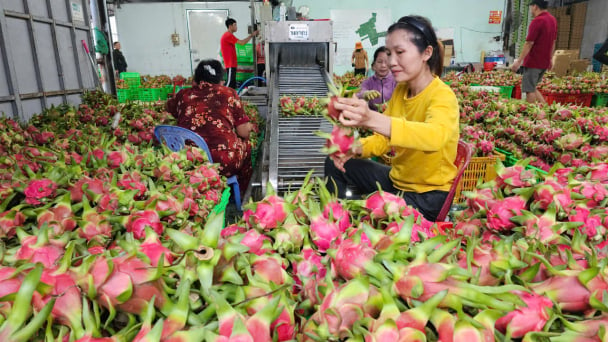
(VAN) According to the Binh Thuan Department of Industry and Trade, in the first five months of 2025, Binh Thuan's dragon fruit export turnover increased by 20.65% compared to the same period last year.
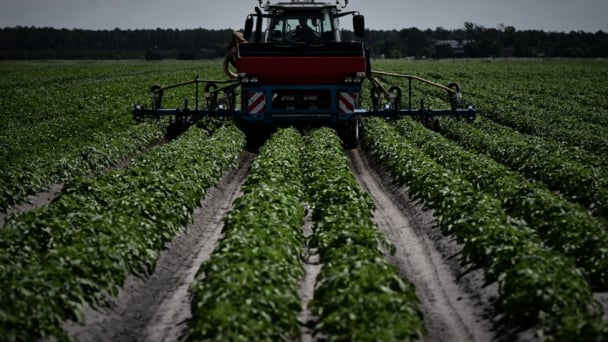
(VAN) EU countries on Thursday gave final approval to new tariffs on fertilizer imports from Russia, a move aimed at cutting off revenue that could support Moscow’s war in Ukraine, despite concerns from European farmers.

(VAN) The working delegation from the Ministry of Agriculture and Environment conducted an important trip to the Netherlands to strengthen strategic partnerships and sustainable development in the agricultural sector.

(VAN) The letter ‘A Plea from the Ocean’ not only evokes emotion but also awakens the human conscience to the responsibility of protecting life on Earth.

(VAN) The Department of Agriculture in South Africa has announced the country’s first mass vaccination of poultry to prevent local birds from contracting avian influenza.

(VAN) Establishment of the Mekong Delta Regional Agricultural Linkage Center, aiming for a closed value chain, deep processing, trading platforms, and international market connectivity.